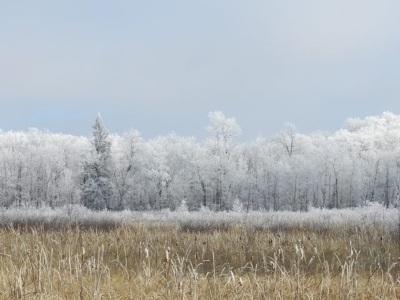
Changing climate and the invasive emerald ash borer (EAB) interact to threaten the health and persistence of culturally and ecologically important Black ash wetlands across the Midwest.
Challenge: Understand the effects of widespread ash loss on wildlife habitat and communities and inform management strategies to reduce EAB-caused mortality.
Principal Investigator(s):
- Alexis Grinde (University of Minnesota Duluth)
Co-Investigator(s):
- Robert Slesak (USDA-FS Pacific Northwest Research Station)
- Brian Palik (USDA-FS Northern Research Station)
- Anthony D’Amato (University of Vermont)
Partners:
- U.S. Department of Agriculture
- Leech Lake Band of Ojibwe
- 1854 Treaty Authority
- Minnesota Department of Natural Resources
Black ash wetlands occupy over 1.2 million hectares of forest in the Great Lakes region, providing habitat for unique and diverse wildlife communities. In these wetlands, black ash trees are a foundational species, regulating all aspects of ecosystem function, and are also an important cultural resource for Native Americans, specifically for basket-makers. Black ash wetlands are critically threatened by the interaction of climate change and the invasive emerald ash borer (EAB), which is expected to spread northward and westward into large expanses of black ash with warming winters. These threats present a significant challenge for long-term conservation efforts to preserve ecosystem functions, cultural lifeways, critical wildlife habitat, and overall biodiversity. Based on previous studies, these wetlands are approaching a critical tipping point, where widespread loss of black ash trees from EAB will lead to dramatic changes in wetland hydrology, plant communities, nutrient dynamics, and carbon storage. However, the overall impact of these changes on wildlife habitat remains unclear.
This project will utilize an existing experiment maintained by the USDA Forest Service to evaluate effects of adaptive management approaches on ecosystem structure and habitat. Specifically, researchers will measure forest structure and composition in yet-to-be-invaded black ash wetlands to determine differences in wildlife communities and habitat quality compared to the same wetlands after simulated EAB invasion. This project will also evaluate adaptive strategies, such as small-patch cutting and clearcutting that are being used to transition black ash wetlands to other species. Information gained from this research will provide a holistic understanding of EAB impacts on wildlife habitat, evaluate the efficiency of adaptation strategies for sustaining habitat, and aid in identifying optimal future habitat conditions for wildlife and the management actions to achieve them.
Read more from the CASC Project Explorer.
Related Publications
Potential impacts of emerald ash borer and adaptation strategies on wildlife communities in black ash wetlands Grinde et al. 2022; Ecological Applications
